This post is also available in:
 French
French  Malagasy
Malagasy
When I started my job as Northwest Regional Manager at Blue Ventures three years ago, my supervisor told me “the biggest challenge you will face is to reverse the dramatic loss of mangrove forests in northwest Madagascar.” Indeed the 140,000 hectares of precious mangroves forests in northwest Madagascar are under threat, with an annual deforestation rate of 3.74% in the Ambanja district, where people cut the wood for cooking and construction. These mangrove forests not only absorb huge amounts of carbon dioxide and provide a natural protective barrier against storms and flooding, but they also offer a safe haven for marine life, thus sustaining the livelihoods of coastal people.
This is why in 2015, Blue Ventures launched an alternative fuelwood programme in Ambanja with an initial group of five fishers and farmers who were interested in planting trees, both as an alternative livelihood and as a sustainable source of charcoal that could eventually substitute mangrove charcoal. Currently, only 18% of the demand for charcoal in Ambanja and the nearby tourist hub, Nosy Be, can be met by sustainable fuelwood plantations, the rest comes mainly from illegally cutting mangrove forests.
At first, this technique seemed a little complex”, said Manitriavy, one of the new fuelwood producers, “but after testing the improved methods, it became clear to me that this new technique was really adapted to our needs: it is not so different from our usual practice but the output and quality of the production is much better!”
The basic idea of an alternative fuelwood plantation is to plant fast-growing brown salwood trees (Acacia mangium), which can be harvested after only three or four years (depending on the surrounding conditions). When a tree is ready to be harvested, the extracted wood is burnt in a kiln to create charcoal – a process called carbonisation. The charcoal is then used by communities as a source of energy, predominantly for cooking. In northwest Madagascar’s towns, electricity can be unreliable; in the villages it is entirely absent, so electric cooking has never been an option.
Over the past three years we’ve dedicated a great deal of time and effort to researching alternative energy sources for cooking. We were intrigued by some solar cookers which proved to be too expensive to run for the communities we work with. Similarly, we spoke to an innovative start-up that develops biodigesters – these were also too costly. We trialled some bio-briquettes made from cardboard in the city of Toliara in the southwest, but there is a limited supply of cardboard in the much smaller town of Ambanja here in the north. Our partner organisation for the alternative energy project, Nitidae, even explored the possibility of producing briquettes made from cashew nut shells, but there are very few cashew trees here.
Whilst all of the methods had their benefits, they each presented their own barrier. I realised there was no silver bullet for generating sustainable energy for cooking in this remote location, but that charcoal produced from brown salwood trees could definitely be part of the solution.
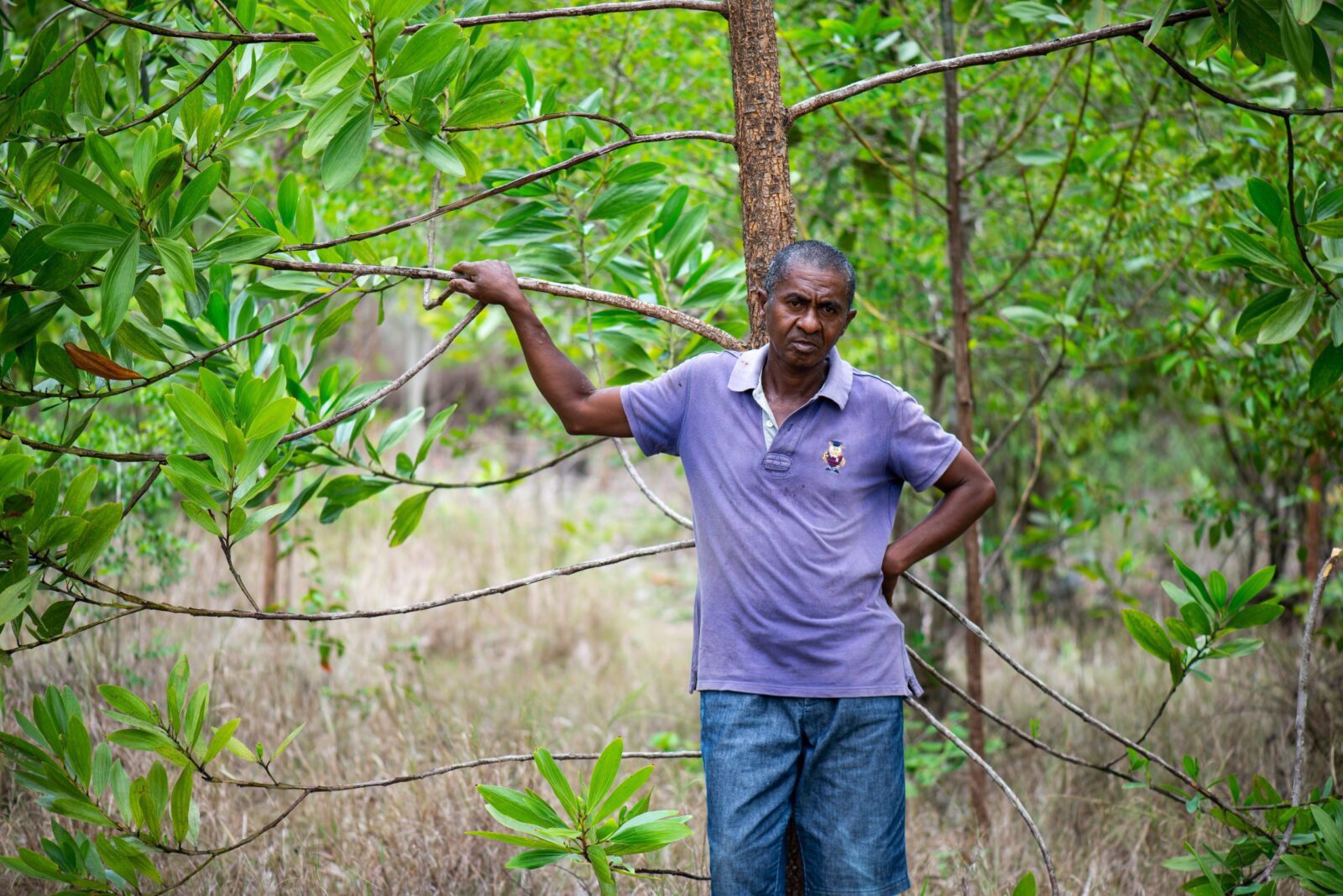
Manohizara, an alternative fuelwood producer in his plantation | Photo: Louise Jasper
Since the project launched in 2015, 40 producers have planted 105,000 trees, covering approximately 100 hectares. By 2020 the trees had grown tall; it was time to harvest. To support the producers through this process, we partnered with international NGO Nitidae, which develops innovative projects that preserve the environment while contributing to the local economy. They are experts in the field of value chains and sustainable energy, so were the ideal partner for this project.
Nitidae was going to support the fuelwood producers to gain more and better quality charcoal, by using more efficient carbonisation techniques instead of commonly used methods which tend to be improvised and result in worse quality and therefore less valuable charcoal.
Nitidae and Blue Ventures organised a meeting with the five producers who were ready to harvest their trees for charcoal, during which Anthony from Nitidae explained some simple yet efficient improvements that the training would cover. Firstly, the producers learnt about the process of drying the wood before burning it to avoid humidity developing in the kiln, which reduces efficiency. Secondly, they were also trained in how to place the wood in the kiln to increase the density, as well as how to seal it with sand and leaves so that smoke and heat can’t escape.
The producers were most intrigued by the use of a chimney and ventilation tubes which control the air circulation and therefore the temperature in the kiln; the slower you burn the wood, the better quality charcoal it becomes.
Two months after the first training session, having harvested and dried their wood, the producers were ready to build their kilns using what they’d learnt so far – cutting and stacking the wood, covering it with sand and leaves, and regulating the temperature using the ventilation tubes. After about 3-5 days (depending on the size of the kiln), the wood had burnt and the charcoal was ready to be collected and weighed.
Before I started growing trees”, smiled Manitriavy, “I was not aware of the value and income potential of this activity. But since I’ve been involved in this plantation, I’m already benefiting from it and I’m happy, not only for the coverage of my plot but also for the surrounding area: it’s getting greener! During this first testing phase, I earned my first income from my plantation. This is only the beginning, but it is the outcome of my efforts, and it motivates me for the future.”
While traditional kilns have a wood to charcoal ratio of around 10-15%, we were able to reach a ratio of 20-25%. In terms of environmental impact, that means that for every 1 kilogram of charcoal produced from brown salwood plantations, you save 8 kilograms of wood from a mangrove forest or protected area.
We all know that the environment is becoming increasingly degraded, particularly due to deforestation”, said Manitriavy, “Here, it is now strictly forbidden by the forest service to cut down natural mangrove forests. I am 100% convinced that many others could plant their own fast-growing trees in their plots, even if it is only with the aim of producing the charcoal needed for their own consumption for cooking. My first production has been a good experience, so I confidently encourage others to go down this path, which offers benefits for us, and will help to prevent our entire ecosystem from collapsing due to deforestation.”
In the Ambanja district, all 12 community associations which locally manage the region’s natural resources come together to form the Federation Miaramiantagna. The federation plays a key role in raising awareness of the environmental impacts of cutting mangroves, but also, crucially, the socioeconomic impacts it can have on the community too. With our support, the community-led federation opted to print their logo on the charcoal bags, along with the following statement: ‘Charcoal from brown salwood plantation – this product allows communities to manage and protect mangroves for the wellbeing of all of us’.
Members of the Fédération Miaramiantagna have been promoting and selling the new sustainable charcoal in Ambanja alongside the producers, explaining to customers that it contributes to the protection of mangrove forests. In exchange, the federation receives 1,000 Ariary per bag (each bag sold for 12,000 Ariary), which funds the wages of mangrove patrollers and also affords some refreshments for participants of mangrove reforestation days.
When I went back to see Manitriavy on his plantation in December, I discovered the miracles of nature: right where the salwood trees had been cut, you could already see seedlings sprouting through the soil. It was so exciting to think that in a few years time, those seedlings will grow into tall trees and offer so much opportunity to Manitraivy and his community.
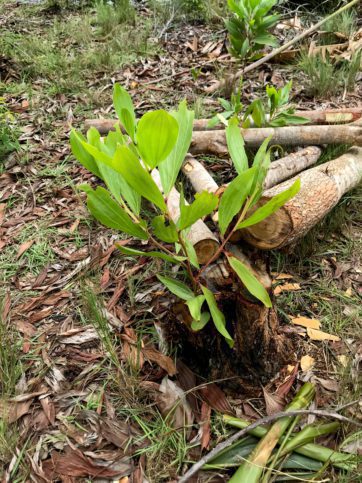
A new seedling | Photo: Cécile Schneider
Find out more about Ambanja’s alternative fuelwood plantations
Learn about Blue Forests
Watch our film about Tahiry Honko, the world’s largest community-led mangrove carbon conservation project


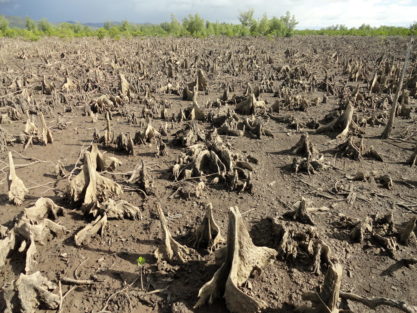
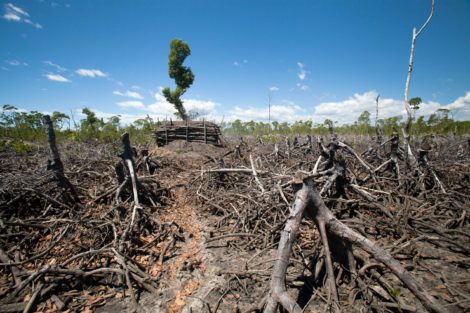
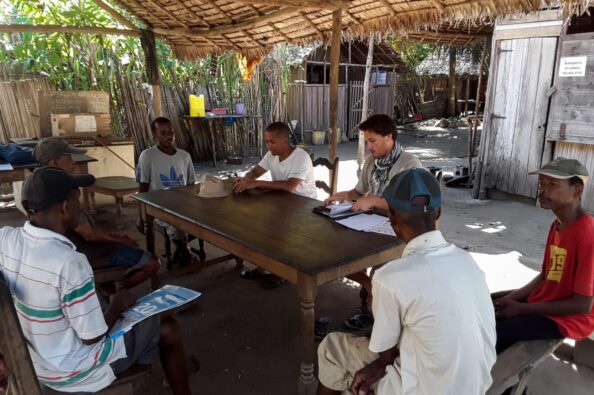

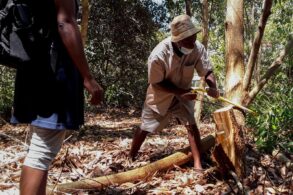
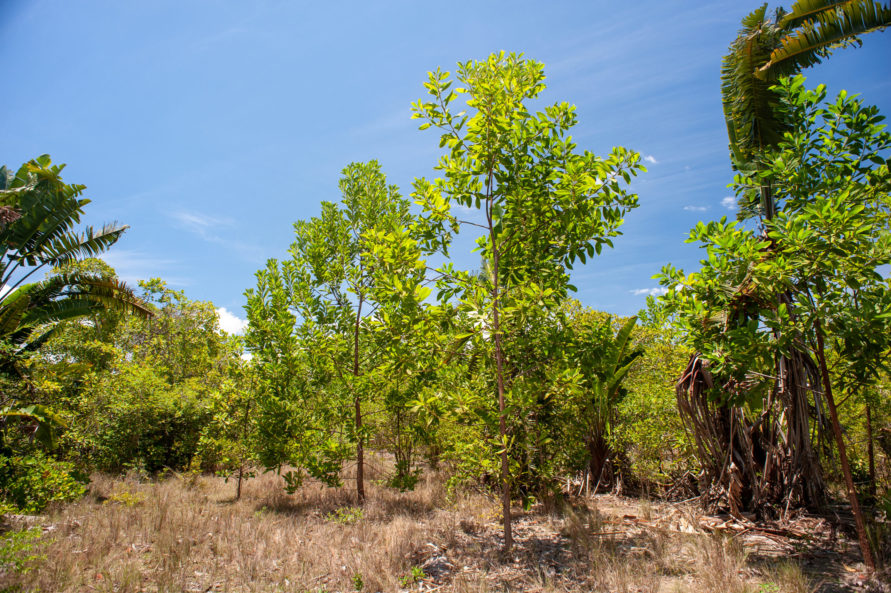
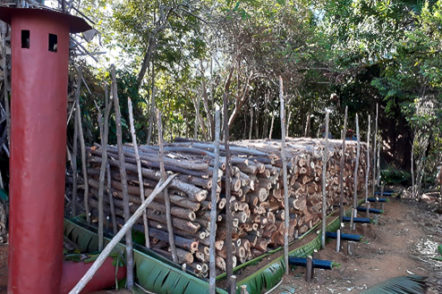


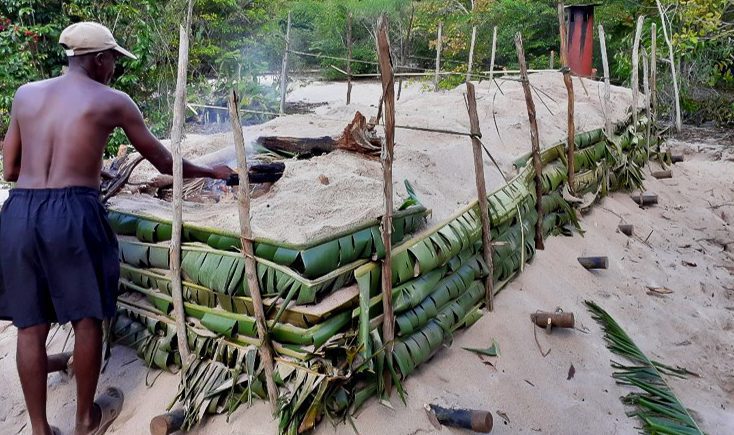
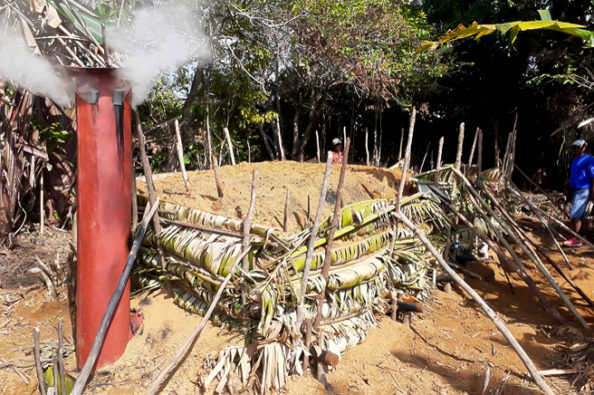

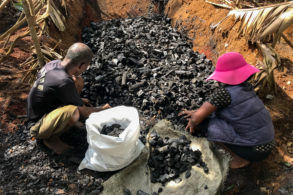
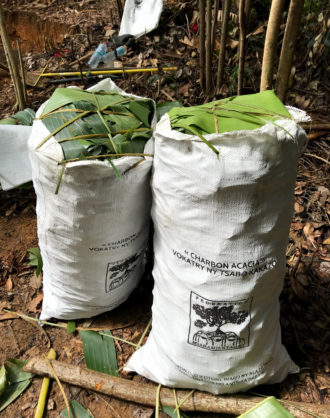

All this is wonderful and really moving…